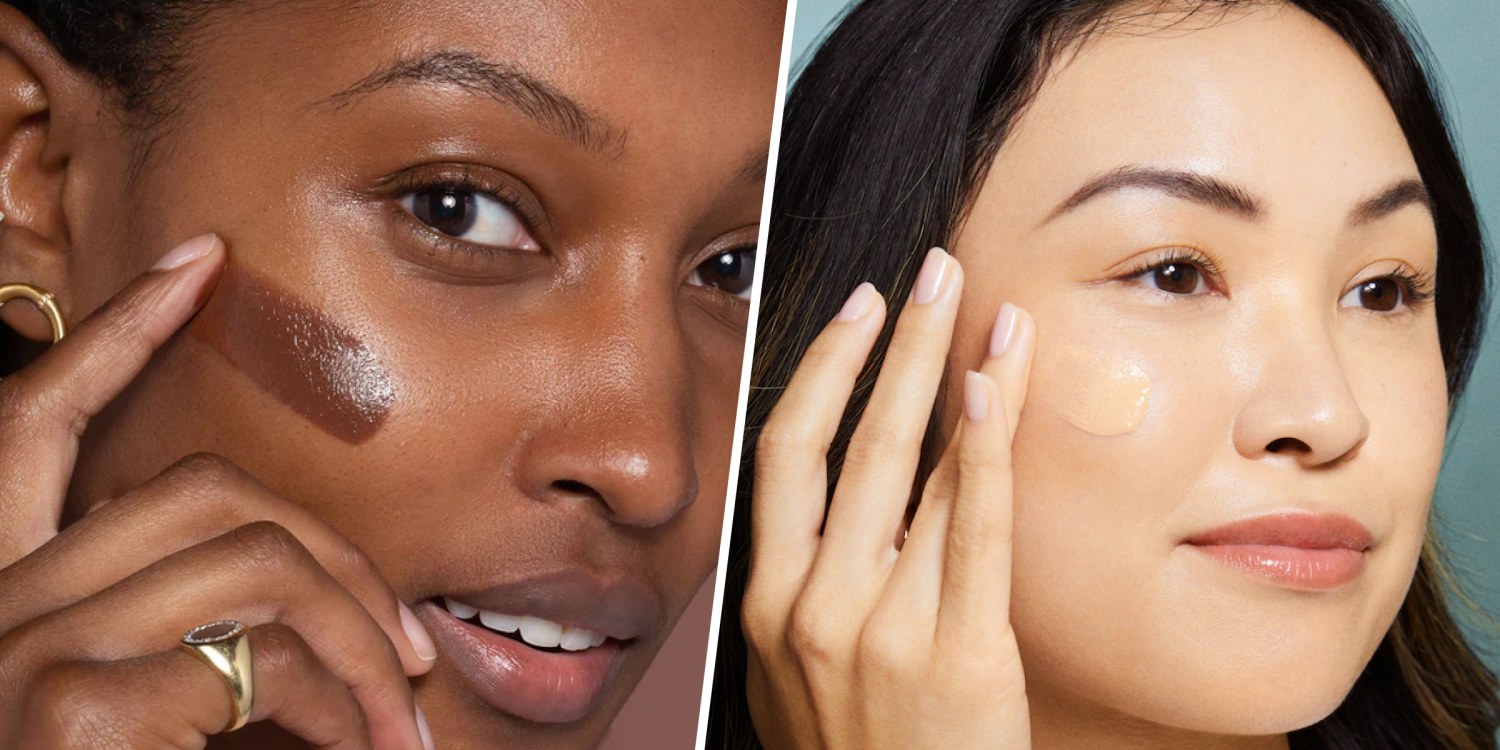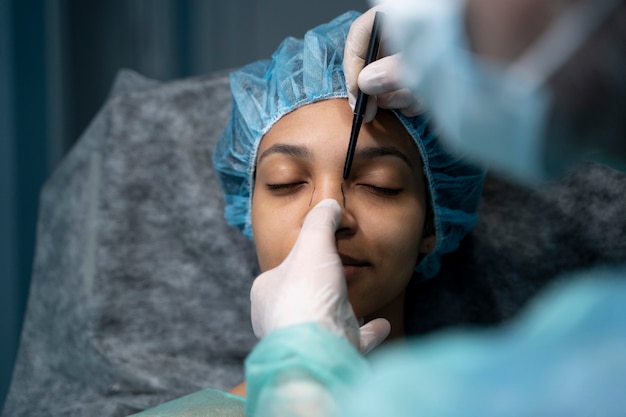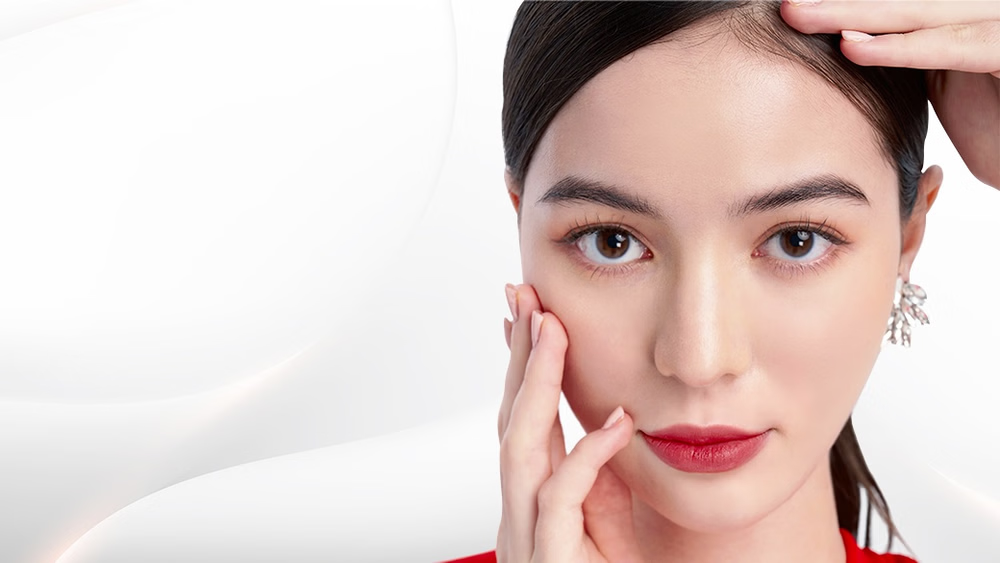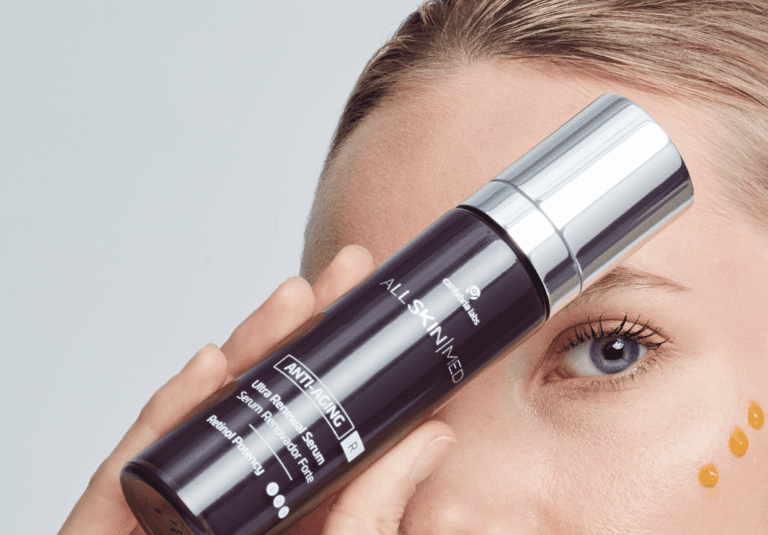Skin
Rare Beauty Tinted Moisturizer: A Revolution in Skincare

Selena Gomez, the well-known singer and actress, is the creator of Rare Beauty, a line of inclusive beauty products that has been creating waves in the market. The Rare Beauty Tinted Moisturizer is one of their best-selling products; it has received positive reviews for its natural-looking coverage and lightweight texture. We’ll explore what makes it unique in this post and why it should be a part of your skincare regimen.
What Sets Rare Beauty Tinted Moisturizer Apart?
The light, breathable consistency feels like a second skin, in contrast to standard foundations that can be heavy and cakey. It offers precisely the correct amount of coverage to minimize flaws and balance out skin tone while preserving your inherent beauty. Furthermore, it is brimming with hydrating components like glycerin and hyaluronic acid, which guarantee that your skin remains hydrated throughout the day.

Benefits of Using Rare Beauty Tinted Moisturizer
Hydration and Skin Nourishment
The capacity of moisturize and nourish the skin is one of its main advantages. The recipe is enhanced with antioxidants and botanical ingredients, which gradually improve the texture and tone of skin. This makes it an excellent option for people who want to accentuate their inherent beauty.
Natural-Looking Coverage
The natural-looking coverage of Rare Beauty Tinted Moisturizer is another excellent feature. Whether you have redness, uneven skin tone, or little imperfections, this tinted moisturizer offers the perfect amount of coverage to give you a flawless complexion without feeling heavy or looking it.
Sun Protection
Rare Beauty Tinted Moisturizer provides SPF 20 sun protection in addition to skincare advantages. This lowers the chance of sun damage and early aging by shielding your skin from the damaging effects of UV radiation.
How to Choose the Right Shade
When selecting a Rare Beauty Tinted Moisturizer shade, it’s critical to take your undertone and skin tone into account. From fair to deep, Rare Beauty has a large selection of hues to match any skin tone. Swatch a few hues on your jawline to discover your ideal match, then select the shade that blends in perfectly with your skin tone.
How to Apply Rare Beauty Tinted Moisturizer
First, cleanse and moisturize your skin for optimal benefits. Next, apply a tiny bit of tinted moisturizer to your face using clean fingertips or a makeup sponge, blending it towards your jawline and hairline. Concentrating on the areas where you desire a more even skin tone, increase coverage as necessary.
Tips for Long-Lasting Wear
Set your Rare Beauty Tinted Moisturizer with a thin dusting of translucent powder for extended wear. This will assist in absorbing extra oil and preserving the look of your makeup all day. Setting sprays is another helpful tool for locking in makeup and maintaining its fresh look for several hours.
Rare Beauty Tinted Moisturizer vs. Other Brands
The lightweight texture and natural finish set it apart from other tinted moisturizers on the market. It is a great pick for everyday makeup looks since many users think that it gives superior coverage and a longer wear time than competitors.

Customer Reviews and Testimonials
Take our word for it, but customers and beauty influencers alike have given great reviews. Its natural coverage, lightweight texture, and skin-nourishing ingredients have won over many customers, who consider it an essential addition to their makeup kits.
Where to Purchase Rare Beauty Tinted Moisturizer
You can buy a few merchants on the official Rare Beauty website. To see the most recent hues and availability, make sure to visit the website.
Conclusion
Uncommon Beauty More than simply a beauty tool, tinted moisturizer is a skincare necessity that combines hydration, coverage, and sun protection in one simple step. Regardless of your level of makeup expertise, this tinted moisturizer is certain to become an indispensable part of your daily regimen.
Read also: Sol Beauty and Care: Elevating Your Skincare Routine
FAQs
1. Can Rare Beauty Tinted Moisturizer be used on all skin types?
2. How long does Rare Beauty Tinted Moisturizer last on the skin?
3. Does Rare Beauty Tinted Moisturizer come in different finishes?
4. Can be used as a primer?
Skin
How to Use Global Beauty Care Retinol Skin Cream
Skin
The Rarest Type of Nose: An Exploration of Distinction

The nose, a centerpiece of human physiognomy, stands as a hallmark of individual identity. While its primary functions—facilitating respiration and detecting aromas—are universal, the diversity in nasal forms is both staggering and fascinating. Some nose shapes dominate populations, while others are so rare they elicit wonder. But what, precisely, constitutes the rarest type of nose? Let us traverse the realms of anatomy, genetics, and cultural resonance to uncover the answer.
Anatomy and Variation: The Underpinnings of Nasal Uniqueness
Before delving into the extraordinary, it’s essential to comprehend the fundamental structure of the nose and the elements shaping its distinctiveness.
Structural Components of the Nose
- Nasal Bones: Form the upper bridge, lending foundational rigidity.
- Cartilage: Confers flexibility and shapes the tip and lateral contours.
- Nasal Septum: Divides nostrils, ensuring balanced airflow.
- Soft Tissue: Adds curvature and dynamic movement to the nose.
These elements, influenced by heredity, ethnicity, and environment, orchestrate a nose’s architecture.
Determinants of Nasal Morphology
- Genetic Blueprint: Nasal shape emerges from an intricate genetic interplay.
- Ethnic Adaptation: Ancestral climates mold nasal forms; slender noses prevail in frigid zones, while wider noses dominate humid locales.
- Age and Trauma: Time and injuries can subtly transform nasal aesthetics.
Recognizing Familiar Nose Types
Common nasal shapes abound across global demographics. Understanding these helps us appreciate the uniqueness of rarer forms.
- Roman Nose: Distinguished by a prominent, gently arched bridge; often depicted in classical sculpture, prevalent in European lineages.
- Button Nose: Petite and rounded with a slightly uplifted tip, often evoking youthful charm.
- Straight Nose: A linear bridge devoid of dips or curves, revered for its symmetry.
- Nubian Nose: A broad base coupled with an elongated bridge, celebrated within African diasporas for its striking allure.
- Hawk Nose: This shape exudes boldness, featuring a pronounced downward curve reminiscent of a raptor’s beak.

A rarity in Nasal Forms
Rare nasal configurations arise from genetic anomalies, evolutionary adaptations, or developmental peculiarities.
Noteworthy Rare Noses
- Fleshy Nose: Bulbous with pronounced soft tissue, less prevalent than streamlined shapes.
- Celestial Nose: Marked by a concave bridge and uplifted tip, its rarity lies in the pronounced upward tilt.
- Pinched Nose: A slim and tapered form, occasionally the result of surgical intervention or specific genetic traits.
The Pinnacle of Rarity: Uncommon Combinations
The rarest nose transcends individual traits, merging several uncommon attributes into one visage. For instance, a celestial nose paired with a profoundly sharp tip and exaggerated curvature is exceptionally unusual.
Genetic Conditions Yielding Unique Noses
- Binder Syndrome: Leads to an underdeveloped nasal bridge.
- Pierre Robin Sequence: Affects facial structure, creating recessed nasal features.
Cultural Perceptions of Rare Noses
Societal lenses magnify the significance of rare nose shapes, attributing symbolic and aesthetic value across epochs.
- In Media and Fashion: Unique noses captivate audiences, positioning their bearers as icons of individuality.
- Historic Standards: Ancient Egyptians prized slender noses for their perceived elegance, while Roman society lauded aquiline noses as emblems of authority.
- Contemporary Movements: Social media champions diversity, fostering an appreciation for distinctive features.
Genetics: The Architect of Nasal Rarity
Heredity and Evolution
- Inheritance Patterns: Unusual features often emerge from recessive traits passed discreetly through generations.
- Evolutionary Influence: Narrow noses, adapted for frigid air, and broad noses, efficient in humid climates, showcase humanity’s adaptability.
Surgical Crafting of Rare Noses
Modern rhinoplasty offers the possibility of replicating rare nasal forms, albeit with caution.
- Rhinoplasty Trends: Precision is paramount when emulating rare features.
- Balancing Risks: Overcorrection risks functional issues, underscoring the need for moderation.

Embracing Nasal Uniqueness
Whether common or extraordinary, the nose is a personal signature. Celebrating its individuality fosters self-acceptance and underscores humanity’s rich tapestry of diversity.
Conclusion
The rarest nose type defies singular definition, arising from a confluence of exceptional traits shaped by heredity, environment, and cultural perceptions. Its rarity enriches the spectrum of human beauty, reminding us that uniqueness is a virtue worthy of reverence.
FAQs
- What governs nasal shape?
Hereditary factors, cartilage structure, and environmental influences shape nasal appearance. - Can nasal shape evolve over time?
Yes, age and physical trauma can alter its form. - Are rare noses universally admired?
Attractiveness is subjective; rare noses often gain admiration for their distinctiveness. - Can surgery replicate rare shapes?
Yes, but achieving natural-looking results requires meticulous precision. - What’s the most prevalent nose type?
Button and Roman noses are among the most ubiquitous globally.
Skin
Eczema and Psoriasis on the Feet: Visuals, Root Causes,

Eczema and psoriasis stand among the most prevalent skin disorders affecting individuals across the globe. When these conditions manifest on the feet, they can cause significant discomfort and pose aesthetic dilemmas. This article delves into the origins, manifestations, and remedial options for eczema and psoriasis of the feet, supplemented by illustrative depictions.
Understanding Eczema: How It Manifests on the Feet
Defining Eczema and Its Underlying Triggers
Eczema, medically termed atopic dermatitis, is a chronic dermatological ailment characterized by inflammation, redness, and relentless itching. Common catalysts include allergic reactions, environmental irritants, and inherited predispositions.
Symptoms of Eczema on the Feet
- Parched, fissured skin.
- Reddened and swollen areas.
- Persistent itch, often intensifying nocturnally.
- Formation of vesicles in severe instances.
Visual Representations of Eczema on Feet
Individuals afflicted may observe inflamed, reddened patches or blistering. Imagery frequently aids in accurate visual diagnosis.
Psoriasis: A Chronic Autoimmune Condition with Distinctive Features
What Defines Psoriasis?
Psoriasis emerges as a chronic autoimmune disorder, spurring the overproduction of epidermal cells. This surplus accumulates, forming plaques frequently observed on the feet.
Manifestations of Psoriasis on the Feet
- It thickened, flaky skin.
- Reddish plaques are often veiled with silvery scales.
- Painful fissures or cracks in the skin.
- Nails may exhibit changes indicative of nail psoriasis.
Visual Evidence of Psoriasis on Feet
Typical depictions reveal heavily scaled skin with a silver-tinged overlay, highlighting the distinctiveness of this condition.

Differentiating Between Eczema and Psoriasis
Key Visual Contrasts
- Eczema: Features redness, oozing vesicles, and pronounced itchiness.
- Psoriasis: Exhibits dry, flaky plaques with silvery layers.
Diverging Etiologies
Eczema is often rooted in allergic hypersensitivity, whereas an autoimmune response drives psoriasis.
Treatment Modalities for Eczema and Psoriasis
Managing Eczema
- Moisturizing Agents: To counteract dryness.
- Topical Corticosteroids: For reducing inflammation.
- Allergen Avoidance: Identifying and steering clear of triggers.
- Natural Remedies: Coconut oil or colloidal oatmeal baths for soothing relief.
Treating Psoriasis
- Topical Applications: Corticosteroids or Vitamin D derivatives.
- Phototherapy: Exposure to UV light.
- Systemic Medications: Biologics or oral therapies for advanced cases.
- Home Solutions: Aloe vera or saline baths to ease symptoms.

Preventive Strategies for Eczema and Psoriasis on Feet
Skincare Routine
- Daily hydration with emollients.
- Use of gentle cleansers to avoid irritation.
Avoidance of Triggers
- Wearing breathable footwear.
- Mitigating stress, a known exacerbator of psoriasis.
Conclusion
Eczema and psoriasis affecting the feet can profoundly impact the quality of life. Through precise diagnosis, bolstered by visual indicators, and effective treatments, sufferers can find substantial relief. Consistent skin care and proactive avoidance of known triggers are indispensable in preventing recurrences.
FAQs
- How does foot eczema differ from fungal infections?
Eczema often presents as redness and dry skin, while white patches and a pungent odor typically mark fungal infections. - Can children develop eczema or psoriasis on their feet?
Yes, eczema is especially common among younger individuals. - What is the typical duration for treating foot psoriasis?
Treatment timelines vary based on severity, with chronic cases requiring long-term management. - Is it possible to have both eczema and psoriasis concurrently?
Although rare, it is feasible to experience both conditions simultaneously, necessitating distinct treatment plans. - Is there a definitive cure for psoriasis?
While psoriasis cannot be eradicated, its symptoms can be effectively managed through appropriate interventions.
-

 Skin9 months ago
Skin9 months agoNatural Oil-Free Face Moisturizer Reviews & Buyers Guide
-

 Hair3 weeks ago
Hair3 weeks agoDoes a Flat Iron Kill Lice? Fact or Myth?
-

 Hair9 months ago
Hair9 months agoDoes a Flat Iron Kill Lice? Fact or Myth?
-

 Skin8 months ago
Skin8 months agoAbout Face Beauty: Tips for Enhancing Your Natural Beauty
-

 Hair9 months ago
Hair9 months agoFunction of Beauty: Personalized Hair Care for Your Unique Needs
-

 Skin8 months ago
Skin8 months agoBeautiful Nails: Tips and Tricks for Healthy and Gorgeous Nails
-

 Hair9 months ago
Hair9 months agoTitanium Flat Iron vs. Ceramic
-

 DIY Cosmetics8 months ago
DIY Cosmetics8 months agoEmpire Beauty School:




